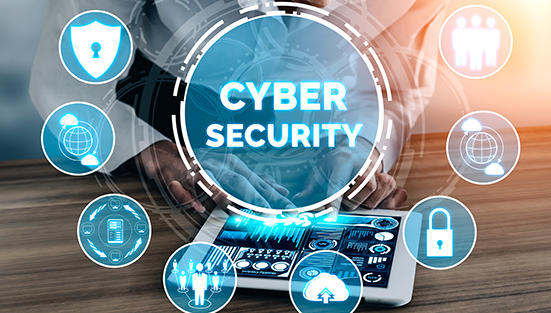
Introduction
Understanding the concept of cybersecurity enhancement involves recognizing the strategies, technologies, and practices that organizations can implement to improve their security posture against cyber threats. Here are some key insights based on recent trends and strategies in the field:
Key Strategies for Cybersecurity Enhancement
- Collaboration Across Sectors:
Enhancing cybersecurity requires stronger collaboration between public, private, and educational entities. This collaborative approach can lead to innovative solutions and a more robust cybersecurity framework. Local governments can broker centralized cyber services, benefiting smaller organizations that may lack resources. - Adoption of Advanced Technologies:
The integration of artificial intelligence (AI) into cybersecurity practices is becoming increasingly important. AI can automate routine tasks and enhance threat detection capabilities, allowing cybersecurity professionals to focus on more complex issues. Traditional tools like Security Orchestration, Automation, and Response (SOAR) are being complemented by AI to improve efficiency and effectiveness. - Implementation of Strong Security Controls:
Organizations are encouraged to adopt a range of security controls to enhance their cybersecurity posture. Key measures include developing incident response plans, enforcing strong user authentication, patching systems regularly, and ensuring data is backed up and encrypted. These foundational practices help mitigate risks and prepare organizations for potential incidents. - Regulatory Compliance and Standards:
Compliance with regulations such as the PCI DSS 4.0 is crucial for organizations to enhance their cybersecurity frameworks. The latest standards emphasize a zero-trust approach and require organizations to strengthen their authentication systems and data protection measures. Compliance not only helps in meeting legal obligations but also fortifies defenses against data breaches. - Focus on Employee Training and Awareness:
Human factors play a significant role in cybersecurity. Organizations must invest in training programs to raise awareness among employees about potential threats and best practices for maintaining security. A well-informed workforce is a critical line of defense against cyberattacks. - Proactive Threat Intelligence:
Organizations should leverage threat intelligence to stay informed about emerging threats and vulnerabilities. Sharing information about incidents and vulnerabilities among industry peers can enhance collective cybersecurity resilience and enable quicker responses to new threats. - Investment in Cybersecurity Insurance:
As the cybersecurity landscape evolves, organizations are increasingly turning to cybersecurity insurance to mitigate financial risks associated with potential breaches. This trend is driven by heightened regulatory expectations and the need for comprehensive risk management strategies. - Geopolitical Considerations:
The geopolitical landscape can impact cybersecurity strategies. Conflicts and tensions between nations can influence the tactics used by cyber adversaries, necessitating a dynamic approach to cybersecurity that accounts for these external factors.
What Role does AI Play in Enhancing Cybersecurity Measures
AI plays a significant role in enhancing cybersecurity measures by enabling real-time threat detection, automated incident response, and continuous monitoring of networks and systems. Here is the keyways AI is transforming the cybersecurity landscape:
Analyzing Large Volumes of Data
AI algorithms can quickly process and analyze massive amounts of data from various sources, including network traffic, security logs, and threat intelligence feeds. This allows for the rapid identification of anomalies, suspicious patterns, and potential threats that would be difficult for human analysts to detect.
Automating Repetitive Tasks
AI-powered cybersecurity solutions can automate repetitive tasks such as vulnerability scanning, patch management, and incident response. This frees up security professionals to focus on more complex and strategic tasks, while ensuring consistent and efficient execution of routine security measures.
Enhancing Threat Detection
By analyzing behavior patterns and establishing baselines, AI can detect unusual activities and restrict unauthorized access to systems. AI models can also prioritize risks, instantly detect malware and intrusions, and provide early warnings of potential threats.
Improving Incident Response
AI can help accelerate alert investigations and triage by automatically generating incident summaries for high-fidelity alerts and automating response actions. This reduces the time taken to detect and mitigate security incidents, minimizing the impact of potential breaches.
Balancing Security and User Experience
AI models can analyze the risk of each login attempt and verify users through behavioral data. This helps balance security with user experience by simplifying access for verified users and reducing the cost of fraud.
Adapting to Evolving Threats
Unlike traditional cybersecurity measures that rely on predefined rules and signatures, AI-powered solutions can adapt to new threats by continuously learning from data. As AI algorithms analyze more data, they become better at identifying emerging attack vectors and evolving malware. While AI has the potential to revolutionize cybersecurity, it is important to note that AI systems are not infallible. Hackers can exploit vulnerabilities in AI models by targeting the data they train on or developing mutating malware that changes its structure to avoid detection. Therefore, a balanced approach that combines AI with human expertise and robust security practices is essential for effective cybersecurity enhancement.

Limitations of AI in Cybersecurity
While AI offers significant advantages in enhancing cybersecurity measures, it also has limitations that need to be considered:
Bias and Lack of Transparency
AI systems can exhibit biases based on the data they are trained on, leading to unfair targeting or discrimination. The lack of transparency in how AI models make decisions can also raise ethical concerns and make it challenging to audit their actions.
Susceptibility to Adversarial Attacks
Malicious actors can exploit vulnerabilities in AI models by feeding them adversarial inputs designed to evade detection or cause the model to misclassify threats. This can undermine the reliability of AI-based security systems.
Overreliance and Complacency
Over relying on AI can lead to complacency among security professionals, diminishing their ability to handle unforeseen threats that AI systems may not be equipped to handle. Excessive dependence on AI could also create a single point of failure if the systems are compromised.
Implementation Challenges
Integrating AI into existing cybersecurity infrastructure can pose challenges, such as compatibility issues and a shortage of skilled personnel proficient in both cybersecurity and AI. The high costs associated with implementing and maintaining AI systems can also be a barrier for some organizations.
Limitations in Handling Novel Threats
AI systems may occasionally misinterpret benign activities as threats or fail to recognize new attack patterns due to limitations in their algorithms. They rely heavily on historical data and may struggle to adapt to rapidly evolving threats.
Potential for Manipulation
Cybercriminals are increasingly targeting AI systems, aiming to manipulate or exploit vulnerabilities within these systems to evade detection or launch sophisticated attacks. Flaws in AI models or vulnerabilities in their implementation can lead to exploitation by malicious actors.
Cybersecurity FAQs
1. What is cybersecurity?
Answer: Cybersecurity refers to the practice of protecting networks, systems, and data from digital attacks, damage, or unauthorized access. It involves implementing measures to safeguard information technology and sensitive data from cyber threats.
2. Why is cybersecurity important?
Answer: Cybersecurity is crucial because it protects sensitive information, prevents identity theft, and ensures the continuity of services. As reliance on digital systems increases, the risk of cyber threats also rises, making robust cybersecurity essential for individuals and organizations.
3. What are common types of cyber threats?
Answer: Common types of cyber threats include:
- Malware: Malicious software designed to disrupt, damage, or gain unauthorized access to systems.
- Phishing: Attempts to trick individuals into revealing sensitive information through deceptive emails or messages.
- Ransomware: A type of malware that blocks access to data until a ransom is paid.
4. How can strong passwords enhance cybersecurity?
Answer: Strong passwords, which include a mix of letters, numbers, and symbols, are harder for hackers to guess or crack. They serve as a primary defense against unauthorized access to systems and accounts.
5. What is a firewall?
Answer: A firewall is a network security system that monitors and controls incoming and outgoing network traffic based on predefined security rules. It acts as a barrier between trusted and untrusted networks, helping to prevent unauthorized access.
6. What is the role of ethical hacking?
Answer: Ethical hacking involves authorized attempts to gain unauthorized access to a computer system, application, or data. Ethical hackers help identify vulnerabilities and threats, allowing organizations to strengthen their security measures before malicious attackers exploit them.
Read Related Post
Latest Trend in Car Technology: Hybrid Electric Vehicles (HEVs)


